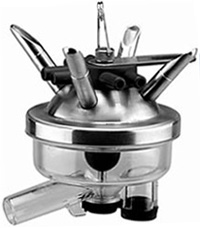PPSU/Dairy Equipment
China Array manufactures complete milking claws composed of high performance polymers, stainless steel, silicone and rubber.
It's hard to imagine that such mundane parts require such high performance materials. . . read on.
Chemical Resistant: the standard Clean-in-Place (CIP) protocol uses alkaline detergents and an acid rinse at 1850 F. Part must also be impervious to milk fat.
Dimensional Stability: plastic bowl connects to stainless top with quarter. Threads must accurately align outlet and claw body.

FDA Approved
Temperature Tolerant: manifold is exposed to temperatures ranging from 1850 F for CIP cleaning to minus 400 F during the night in unheated milking parlors.
Impact & Tensile Strength: manifold must stand up to the impact of kicks and drops, as well as the torsion exerted by twisting hoses.
Precise Tolerances: a water tight and vacuum tight seal between the shutoff and the manifold is required to stop milk flow in the event of an unexpected drop off.
Wear-ability: Parts are used up to 20 hours per day 7 days a week in harsh conditions.
Clarity: visual inspection of milk flow requires long term transparency.

Plastic to Plastic Air Tight Seal
A milk shutoff (photo at left) is small, but vital, part of a milking system. Floating inside the milking chamber, the shutoff must drop down and seal off the milk inlet in the event of a drop off to prevent debris and bacteria from entering the milking claw. Molded perfectly round, the shutoff seals against a precision machined depression in the bottom of the polysulfone claw for a perfect seal: plastic to plastic.
Ultrasonic Welding
The shutoff must be hollow to float on milk. This is achieved by molding a separate body and cap, which are then ultrasonically welded for a hermetic seal.


